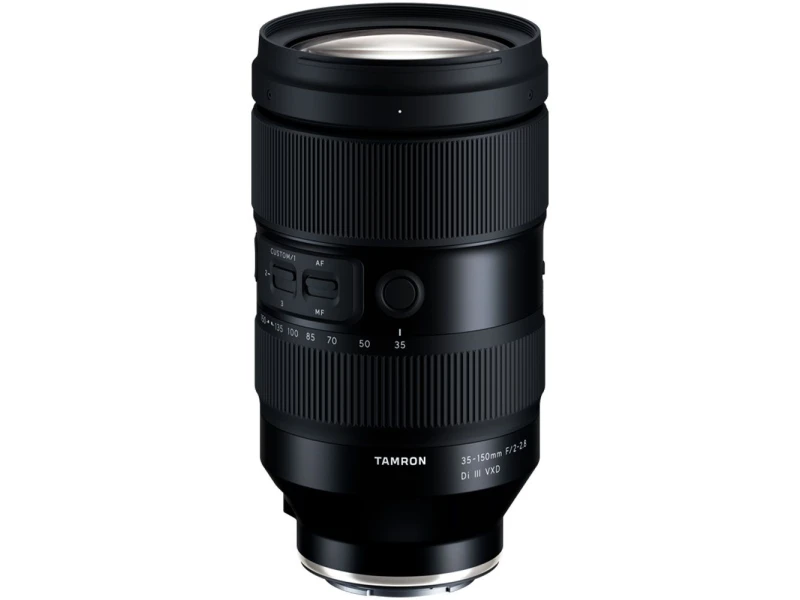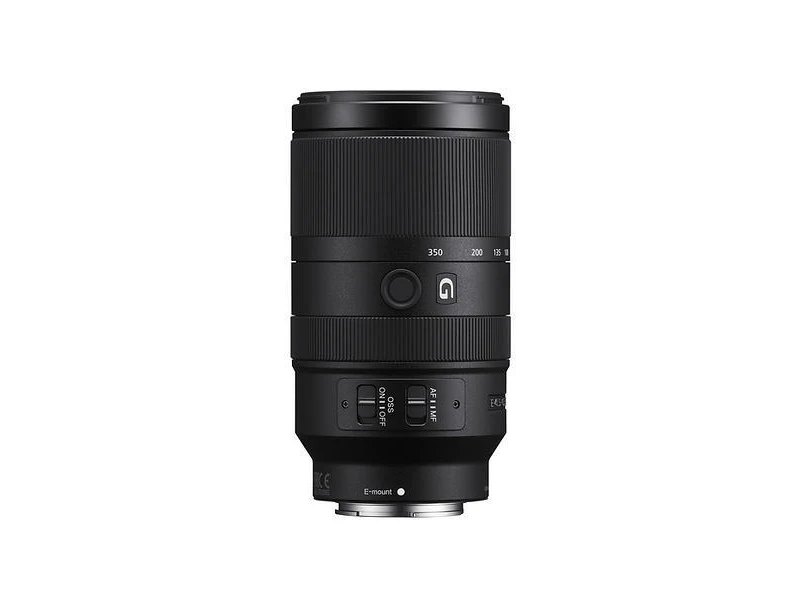Tamron AF 35-150mm f/2-2.8 Di III VXD Sony E vs Sony E 70-350mm f4,5-6,3 G OSS
Tamron AF 35-150mm f/2-2.8 Di III VXD Sony E vs Sony E 70-350mm f4,5-6,3 G OSS
When comparing Sony E 70-350mm f4,5-6,3 G OSS and Tamron AF 35-150mm f/2-2.8 Di III VXD Sony E, which one is better?
1. Lens Mount Comparison
These two lenses use the same lens mount, the Sony E. This means that both lenses are compatible with cameras that use this mount.
Winner: Tied
Regarding lens mount: Popular lens mounts are Canon RF and EF, Micro Four Thirds and Nikon Z. Different lens mounts lets you connect different lenses to camera bodies, but some might not be compatible. This can be helped by using an adapter, like a Canon EF to RF adapter.
2. Largest Aperture Comparison
The Tamron AF 35-150mm f/2-2.8 Di III VXD - Sony E has the largest aperture of the two lenses at 2 - 2.8 compared to the 4.5 - 6.3 aperture of Sony E 70-350mm f4,5-6,3 G OSS. This means that you get more light to your sensor using Tamron AF 35-150mm f/2-2.8 Di III VXD - Sony E wide open, and therefore it might be a better lens in dark situations.
Winner: Tamron AF 35-150mm f/2-2.8 Di III VXD Sony E
Regarding largest aperture: A lower aperture number means that the widest aperture on the lens is larger. This means that more light will hit the sensor and also that the depth of field will be shallower, better separating your subject from the background.
3. Lens Type Comparison
Both lenses are Zoom lenses, which means that you can choose both Tamron AF 35-150mm f/2-2.8 Di III VXD - Sony E or Sony E 70-350mm f4,5-6,3 G OSS if you're looking for that type of lens.
Winner: Tied
Regarding type: There are two types of lenses; zoom lenses and prime lenses. Prime lenses have a fixed focal length and cannot be zoomed, while zoom lenses have a focal length range and can be zoomed in to get closer to the subject. Prime lenses are usually lighter, cheaper and let in more light. Zoom lenses are more versatile but are more expensive since they require a more advanced lens design.
4. Stabilization Comparison
Sony E 70-350mm f4,5-6,3 G OSS features built-in image stabilization and Tamron AF 35-150mm f/2-2.8 Di III VXD - Sony E does not. Depending on your shooting style, this may be a heavy factor to choose Sony E 70-350mm f4,5-6,3 G OSS instead of Tamron AF 35-150mm f/2-2.8 Di III VXD - Sony E.
Winner: Sony E 70-350mm f4,5-6,3 G OSS
Regarding image stabilization: When a lens features built-in stabilization, it will actively help you hold the image steady by adjusting the optical elements inside the lens to compensate for movements. Do remember that lens stabilization is not required, but it may be suitable depending on your specific needs.
Specifications
Full specifications table of Tamron AF 35-150mm f/2-2.8 Di III VXD Sony E and Sony E 70-350mm f4,5-6,3 G OSS:
| Tamron AF 35-150mm f/2-2.8 Di III VXD - Sony E | Sony E 70-350mm f4,5-6,3 G OSS | |
 |  | |
| Brand | Tamron | Sony |
| Weight | 1165 g | Missing |
| Lens Mount | Sony E | Sony E |
| Focal Length | 35 - 150 mm | 70 - 350 mm |
| Largest Aperture | 2 - 2.8 | 4.5 - 6.3 |
| Anamorphic | No | Missing |
| Type | Zoom | Zoom |
| Aperture Range | 2 - 22 | Missing |
| Aperture Blades | 9 | Missing |
| Lens Groups | 15 | Missing |
| Lens Elements | 21 | Missing |
| Image Stabilization | No | Yes |
| Parfocal | Yes | Missing |
| Autofocus | Yes | Missing |
| Macro | No | Missing |
| Weather Seal | Yes | Missing |
| Full Frame Coverage | Missing | Yes |
| Lens Hood Included | Missing | Yes |
| Stabilization Type | Missing | Sony Optical SteadyShot (OSS) |
